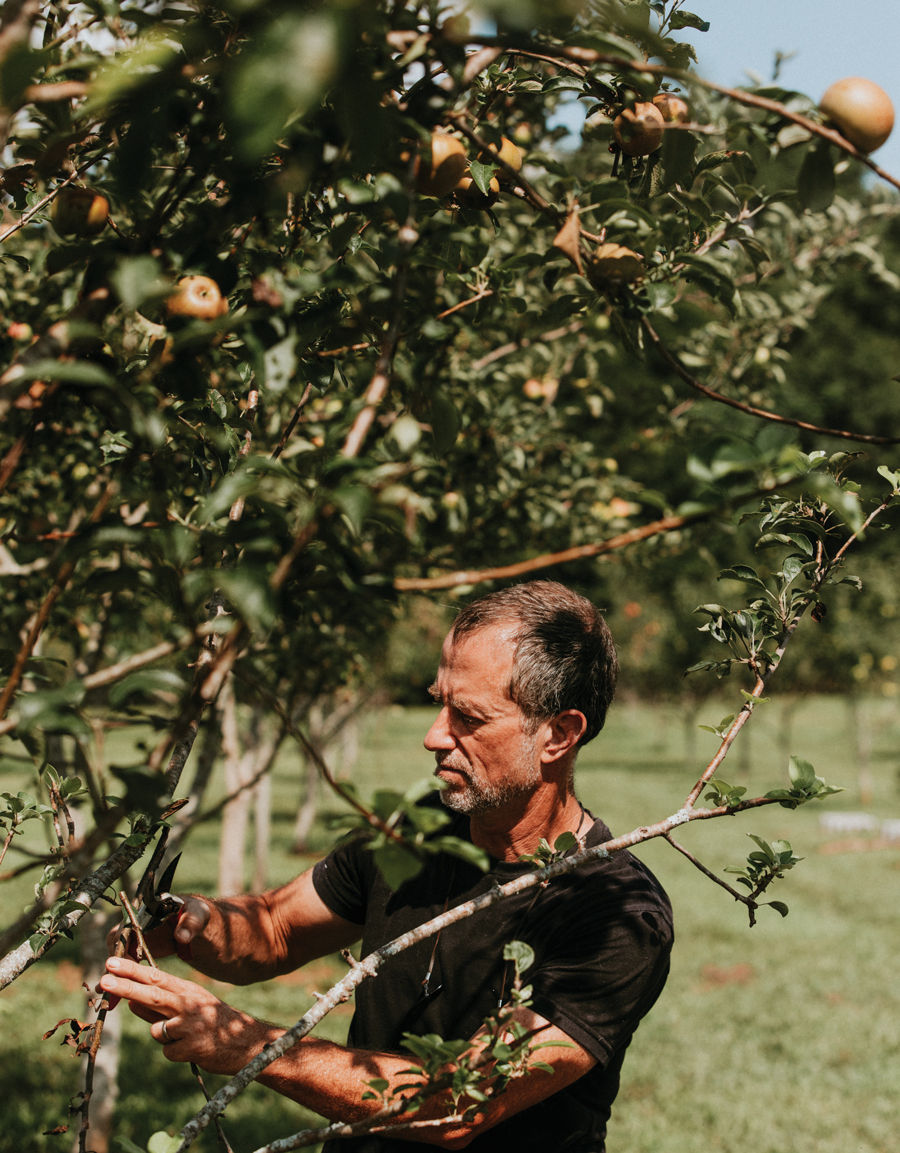
Photograph by Growl
In 2015, when Stephen Mihm moved his family from Decatur to South Oconee County, just outside of Athens, his new historic home came with an unusual stipulation: Per a restrictive tax covenant, the property owners had to produce agricultural activity. Mihm, originally from Connecticut, wasn’t a farmer—he was a history professor at the University of Georgia, specializing in business and technology. But he did have a copy of Old Southern Apples, the seminal 1995 encyclopedia of 1,800 heirloom varieties once grown across the Southeast, which author Creighton Lee Calhoun spent decades meticulously researching (and cultivating in his own nursery). As Mihm began to realize how vast the diversity of Southern apples once was, he realized there might be a project in reclaiming some of them. “So,” he says, “I started planting my own orchard.”
A hundred miles from Athens, and unbeknownst to Mihm, a UGA colleague was pursuing a similar line of inquiry. Josh Fuder’s interest was also catalyzed by a real estate purchase, when he bought a house in Canton with around 25 old apple trees on site. A Cherokee County extension agent, Fuder felt compelled to learn more and soon started teaching grafting workshops. He reached out to the USDA’s Plant Genetic Resources Unit to ask for resources; in response, Fuder’s USDA contact tipped him off that someone else at UGA was doing research on heirloom apples, too.
Mihm, who’d originally set out to hunt down cultivars thought to be completely extinct, was poring over old maps and taking long drives through rural Georgia hoping to spot old apple trees in backyards. After connecting with Fuder, he expanded the project’s scope beyond lost varieties to include nearly forgotten types at risk of disappearing. “I realized that, as romantic as it is to find varieties that have not yet been rediscovered,” says Mihm, “there was a more practical and consequential thing to do, which is to take the varieties that do exist—however rare they may be—and preserve them in some way.” Fuder and Mihm called Ray Covington, who runs UGA’s Mountain Research and Education Center in Blairsville, where some 1,400 trees are studied for things like disease management and irrigation techniques. Covington arranged for two acres of land to be set aside for Mihm and Fuder’s project: the Heritage Apple Orchard.
Today, the orchard is home to 140 heirloom varieties, grown from wood cuttings snipped from trees found in niche orchards, rural backyards, and other sources across the Southeast—two trees of each, or “a Noah’s Ark of Southern apples,” as both Fuder and Mihm describe it. The work has yielded not just a cache of apple trees but also of oral histories from across the state. “I enjoy getting to meet people that call and want to just go on and on about growing up with trees in their backyard,” Fuder says. Sometimes, they score a winner—like the call that recently brought them out to Clarkesville to find a tree that Fuder estimates to be more than a century old.
From its name to its function, every apple at the Heritage Orchard tells a story: Some were used for making cider, thanks to their tannin content; others for making pies, because they held their shape in an oven. There are apples that won national awards at the turn of the 20th century (Fort’s Prize), and apples purported to be Abe Lincoln’s favorite (Red Astrachan). There’s even an apple that originated in Fulton County before the Civil War (Terry Winter). And there are apples likely cultivated by skilled indigenous Cherokee orchardists, who, after colonists brought apples here, grew thousands of fruit trees in the Southeast before being forcibly removed. Their orchards were plundered by white farmers, who propagated, renamed, and sold the fruits.
Pomology and human history are tightly intertwined; apple trees “hold memories,” says Diane Flynt, who owns a cider orchard in the Blue Ridge Mountains in Virginia. Flynt, the author of a forthcoming history of Southern apple cultivation, isn’t just being poetic: There is human desire and intention behind every tree, because the science requires it.
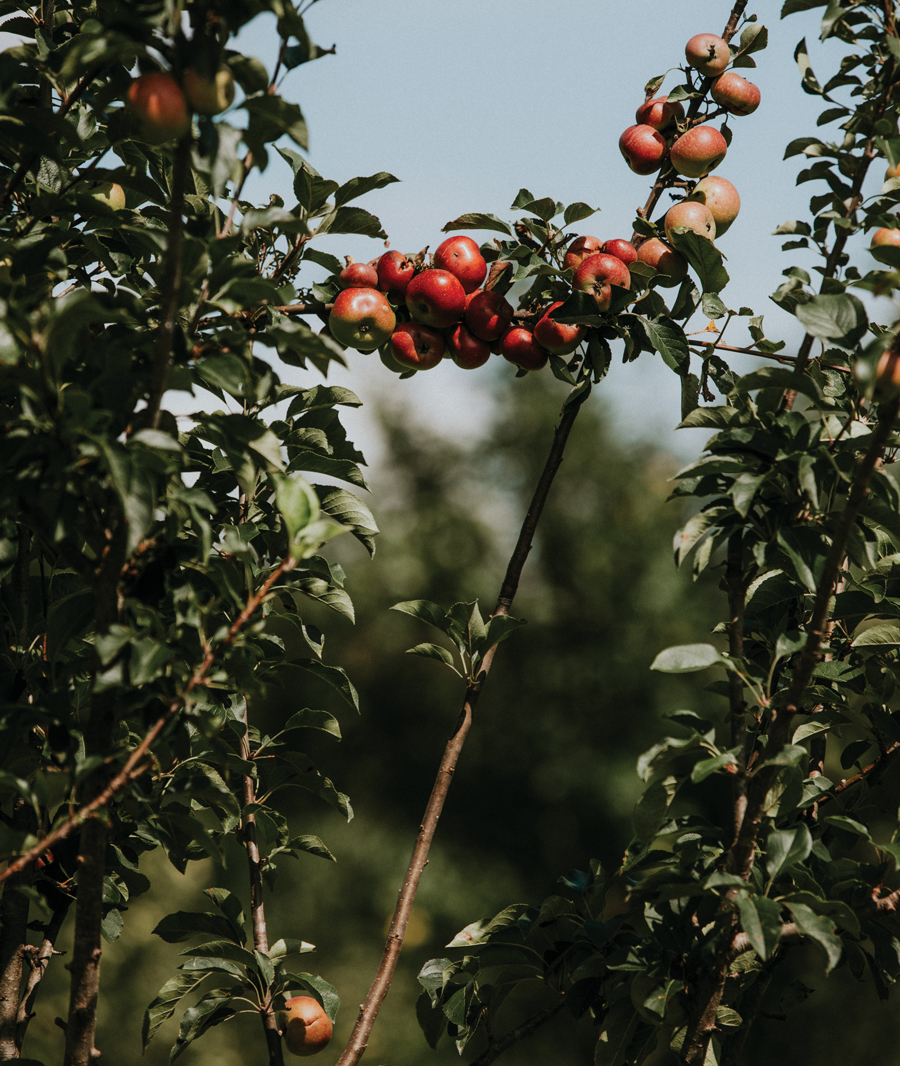
Photograph by Growl
A gardener who loves heirloom tomatoes can simply save seeds from their mature plants, scatter them in the dirt the following year, and expect the exact same fruit. Apples are different: Each tree requires pollination from a different variety of apple, and the resulting seeds are completely different from both parent trees. Since there’s no way to grow a genetically identical apple tree from its seed, every named apple variety is instead reproduced by grafting wood from a living tree (called scion wood) onto a stem with roots (rootstock). “All of those apples that have names reflect the desire of a human being,” Flynt explains. “Somebody liked that apple for some reason, so much that they grafted it by hand.”
Unlike tobacco or cotton, apples may not spring to mind as a distinctly Southern crop. But they were grown all over the South, Flynt says, mentioning one noteworthy nursery right outside of Augusta: Fruitland, now home to the Augusta National Golf Club. At one point, Georgia was home to hundreds of cultivars, from family varieties grown in backyards to commercial apples bound for parts of the country that couldn’t grow their own in the winter—like the Detroit Red, which Mercier Orchards shipped to the Chicago area. (Around here, Flynt says, it’s pronounced “Dee-troit Red.”)
“A region would get a name for producing a certain kind of apple, and they’d plant a lot of that, and these other varieties would fall by the wayside,” Flynt says. Refrigerated rail transport changed everything: Once apples could be shipped across the country, the market demanded varieties that were easy to grow en masse, held up well in shipping, and could sit longer periods on grocery shelves. By the mid-20th century, the selection of apples available to consumers shrunk to just a few kinds: red, green, or yellow.
• • •
Up at the Heritage Orchard, the young trees are still establishing themselves. Exciting as it was for Mihm and his collaborators to get their hands on so many nearly forgotten cultivars, it’s now an exercise in sustained patience: It’ll likely be next year before they’re able to actually taste the fruits of their labor, and another year beyond that until they have a good sampling of fruits to assess. These first few years, Covington tells me, are more about training the plants, establishing strong structure, and taking data on things like bloom time. Once the trees are mature and reliably fruiting, the group plans to open the orchard to the public for tasting, picking, and education. Mihm is also expanding the orchard’s offerings to Southeastern apples, not just those from Georgia.
While it’s unlikely that any of the apples growing in Blairsville will challenge the ubiquity of Red Delicious and its produce-aisle cohorts, Mihm and Fuder hope their orchard can serve as a kind of incubator for all of this genetic diversity—and that, eventually, some of these apples might regain a commercial footing, at least here in Georgia. Both also feel optimistic about the project’s potential for Georgia craft cider: What was historically “America’s drink of choice,” as Mihm describes it, has experienced a resurgence in other parts of the country. “I’d consider it a significant victory if a few orchards opened for cider production using these apples,” he says. (Fuder, who makes his own cider with the heirloom apples he grows at home, agrees.)
But beyond these hopes for seeing an apple like Rabun Bald or Fort’s Prize make its way back into people’s kitchens (or cider bottles), the project holds another significance for Mihm, the historian: These apples weren’t the product of natural selection; they were cultivated by humans, with care and intention, and are just as much a manifestation of history as a piece of art or architecture. “This plant material, which we think of as nature, is actually in this case very much tied up with history, and the history of the human past,” he says. “And it should be preserved for that reason alone.”
The fruits of their labors
In the late 19th and early 20th century, the USDA commissioned thousands of watercolor portraits, photos, and lithographs of varieties of American fruits and nuts—more than half of them apples. Here are paintings of six of the fruits being cultivated at the Heritage Apple Orchard.

U.S. Department of Agriculture Pomological Watercolor Collection

U.S. Department of Agriculture Pomological Watercolor Collection

U.S. Department of Agriculture Pomological Watercolor Collection
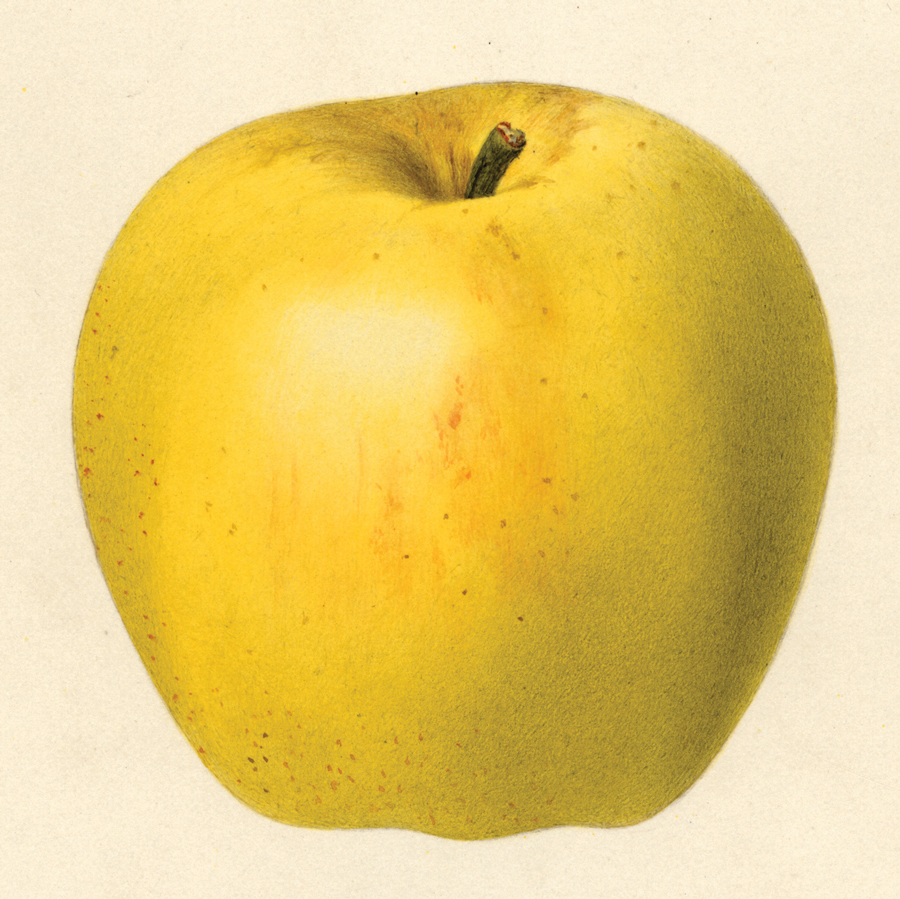
U.S. Department of Agriculture Pomological Watercolor Collection
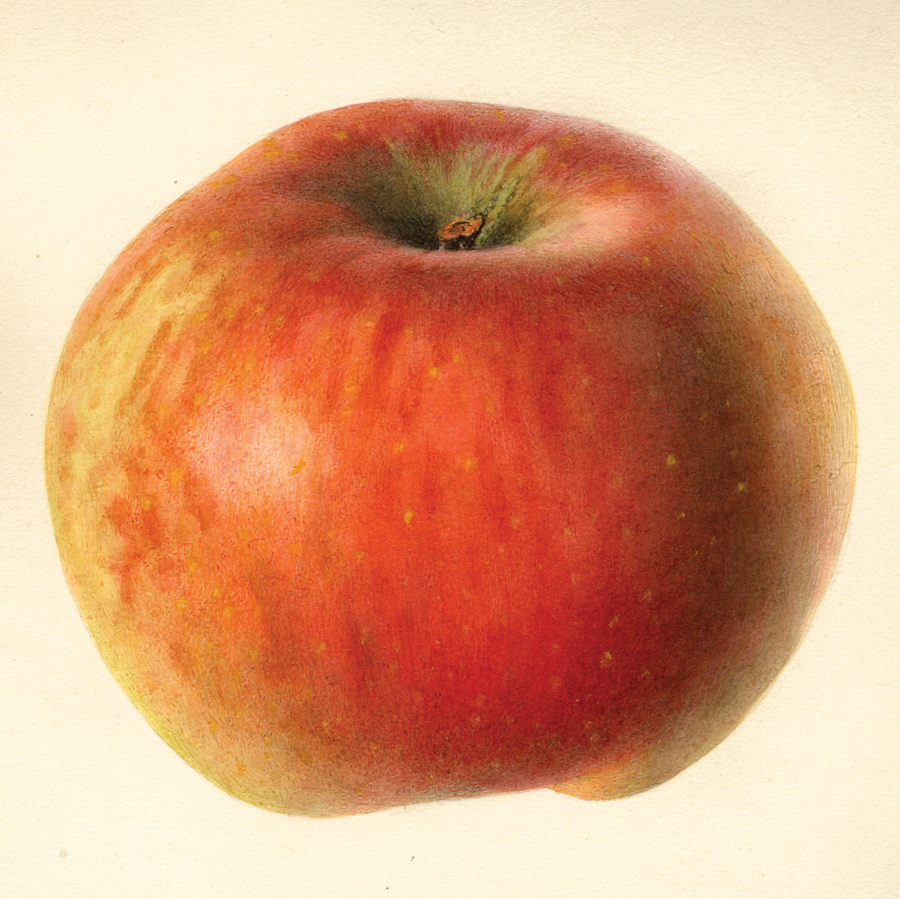
U.S. Department of Agriculture Pomological Watercolor Collection
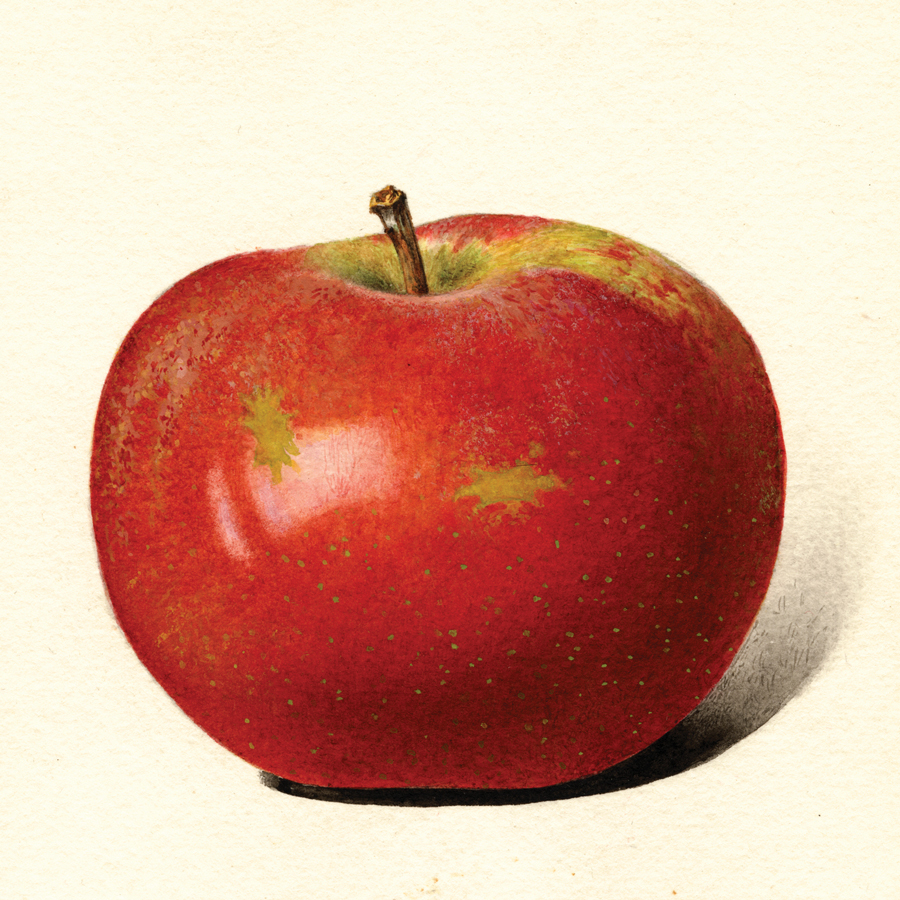
U.S. Department of Agriculture Pomological Watercolor Collection
This article appears in our September 2022 issue.













